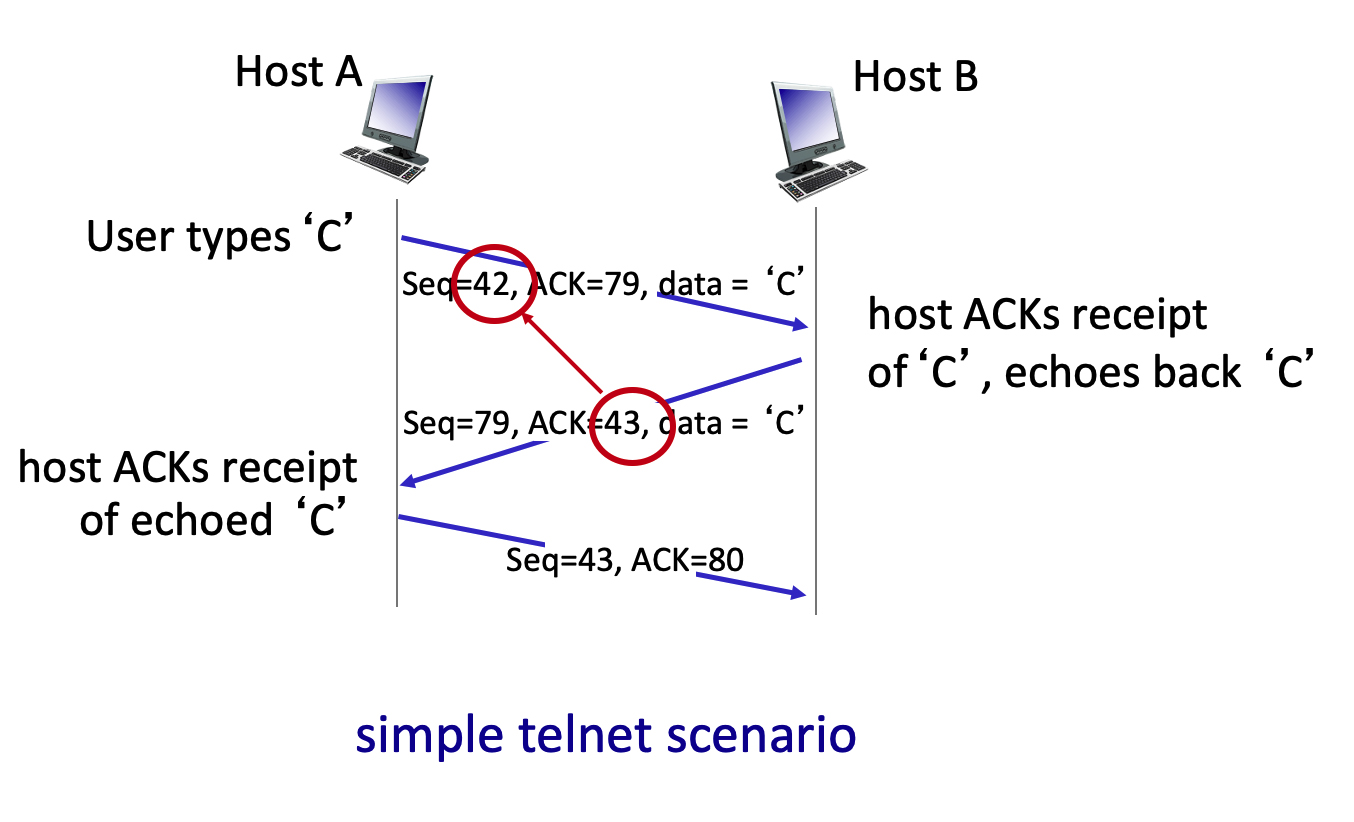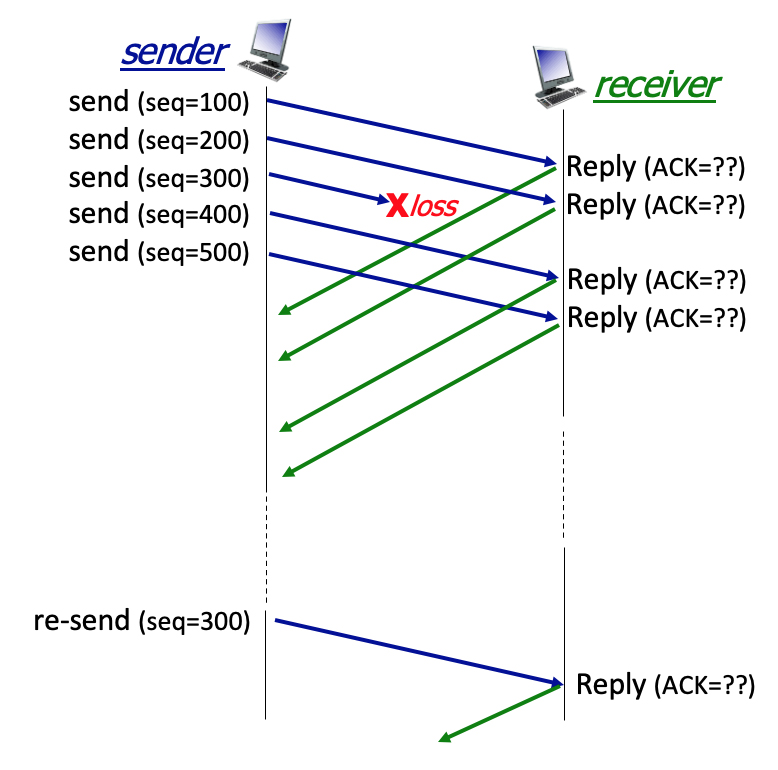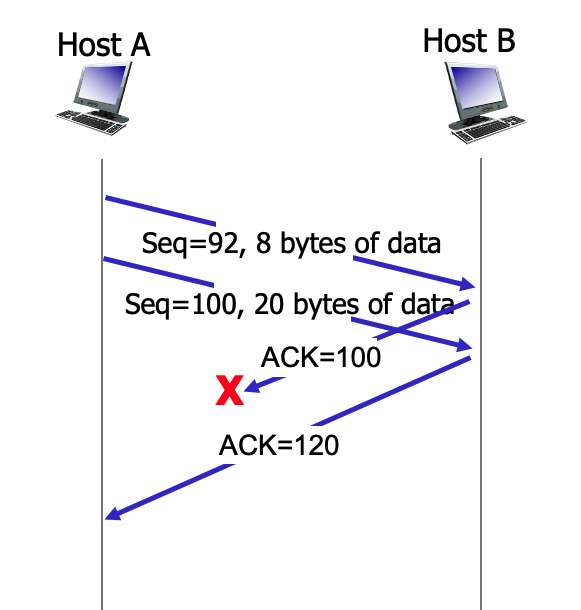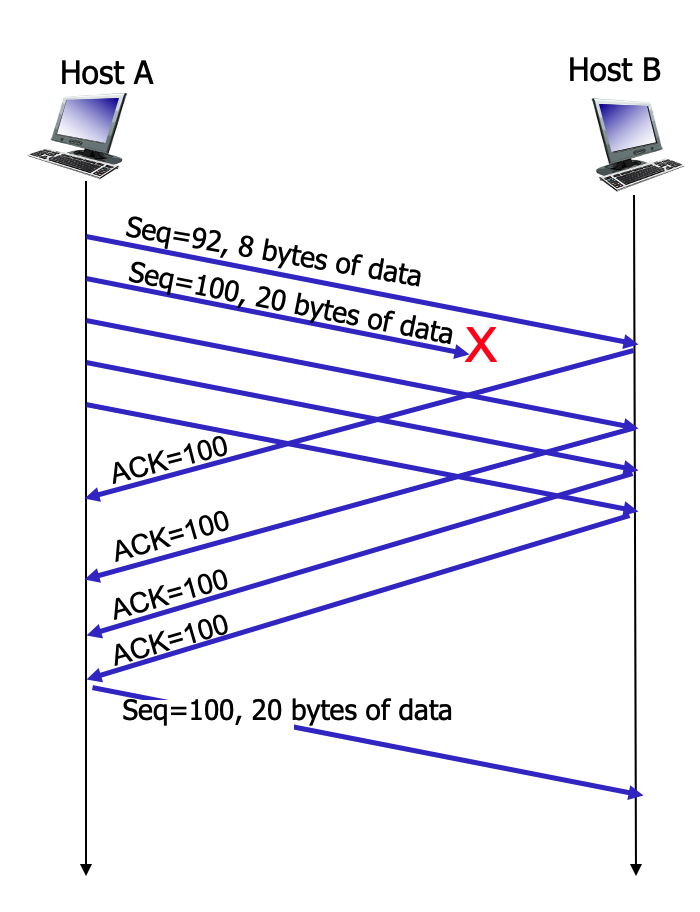TCP reliability semantics.
True or False: On the sending side, the TCP sender will take each application-layer chunk of data written into a TCP socket and send it in a distinct TCP segment. And then on the receiving side, TCP will deliver a segment’s payload into the appropriate socket, preserving the application-defined message boundary.
TCP segment format.
For the given function of a field in the TCP segment, select the name of that field from the pull-down list.
TCP sequence numbers and ACKs (1).
Consider the TCP Telnet scenario below (from Fig. 3.31 in text). Why is it that the receiver sends an ACK that is one larger than the sequence number in the received datagram?

TCP sequence numbers and ACKs (2).
Suppose that as shown in the figure below, a TCP sender is sending segments with 100 bytes of payload. The TCP sender sends five segments with sequence numbers 100, 200, 300, 400, and 500. Suppose that the segment with sequence number 300 is lost. The TCP receiver will buffer correctly-received but not-yet-in-order segments for later delivery to the application layer (once missing segments are later received).

Complete the sentences below ....
TCP RTT Estimation: EWMA.
Consider TCP use of an exponentially weighted moving average (EWMA) to compute the nth value of the estimated RTT:
EstimatedRTTn = (1- a)*EstimatedRTTn-1 + a*SampleRTTn
True or False: with this EWMA algorithm the value of EstimatedRTTn has no dependence on the earlier sample, SampleRTTn-1
EstimatedRTTn = (1- a)*EstimatedRTTn-1 + a*SampleRTTn
True or False: with this EWMA algorithm the value of EstimatedRTTn has no dependence on the earlier sample, SampleRTTn-1
TCP timer management.
Consider the TCP Telnet scenario below (from Fig. 3.36 in text). What timer-related action does the sender take on the receipt of ACK 120?

TCP Flow Control.
True or False: with TCP’s flow control mechanism, where the receiver tells the sender how much free buffer space it has (and the sender always limits the amount of outstanding, unACKed, in-flight data to less than this amount), it is not possible for the sender to send more data than the receiver has room to buffer.
TCP connection management.
Match the description of a TCP connection management message with the name of the message used to accomplish that function.
TCP Fast Retransmit.
Consider TCP’s Fast Retransmit optimization (see Figure 3.37 from the text, below). Of course, the sender doesn't know for sure that the segment with sequence # 100 is actually lost (it can’t see into the channel). Can a sender get three duplicate ACKs for a segment that in fact has not been lost? Which of the following statements are true? Suppose a channel can lose, but will not corrupt, messages.
